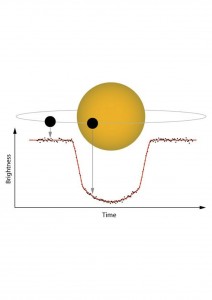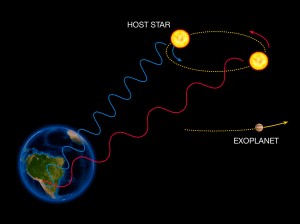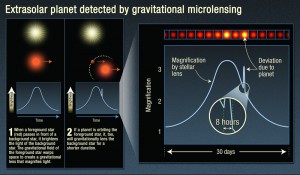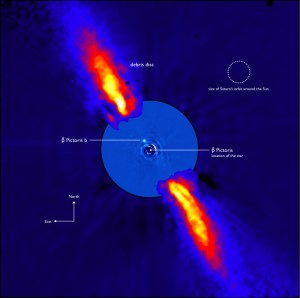How do we search (and find) exoplanets
It is practically impossible to directly observe a planet because its light is about a million times weaker than that of its star. It’s a bit like trying to see a firefly placed next to the lighthouse of a car. So that’s why we had to develop so-called indirect techniques like:
Transits, when looking at the drop in brightness of a star when a planet passes in front of it. The intensity of the drop is proportional to the size of the planet.
Radial velocities, when measuring the change in speed of a star caused by the presence of a planet. The value of the speed is proportional to the mass of the planet.
Gravitational Lens, when taking advantage of the passage of a planet in front of a very massive object which affects the light emitted by the planet.
Astrometry, by observing the movement of a star, we can deduce the mass of the planet if the star shows an eliptical movment.

Path of a star viewed of a distance of 50pc and orbited by a 15Mj planet with a semi-major axis of 0.6 UA. Credit ESA.
But thanks to advances in technology we start now to be able to detect some planets directly. These techniques are very difficult to implement and need the use of a cotonograph wich hide the star. It’s why only a dozen has been photographed until today.
← Faqs






Comments are closed.